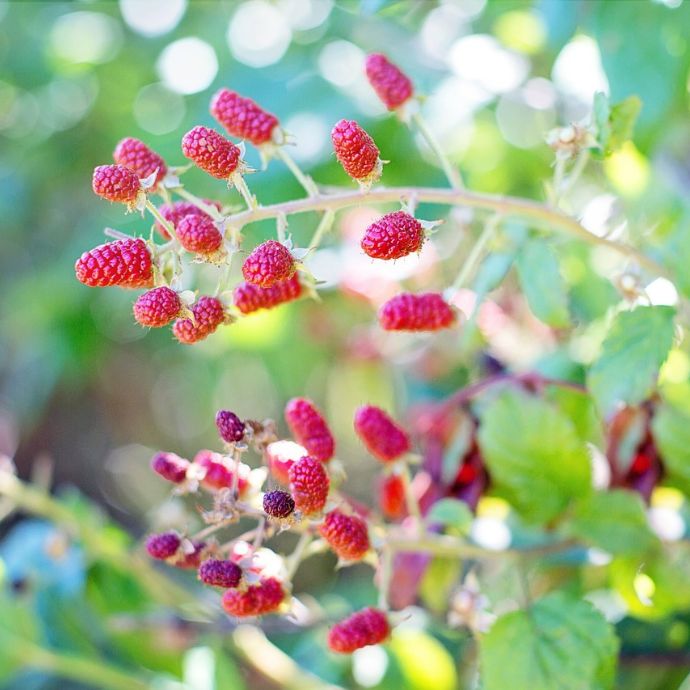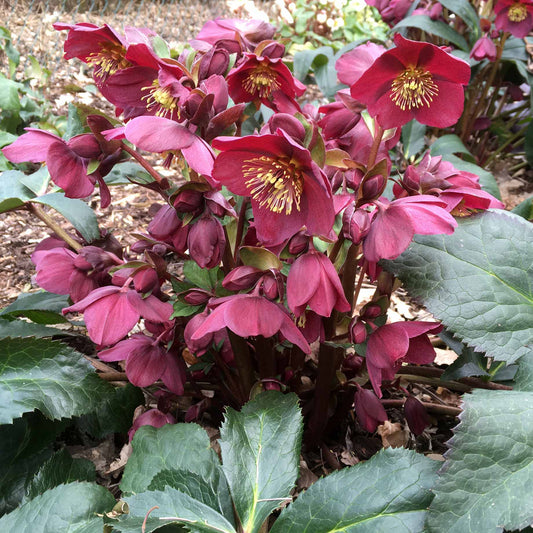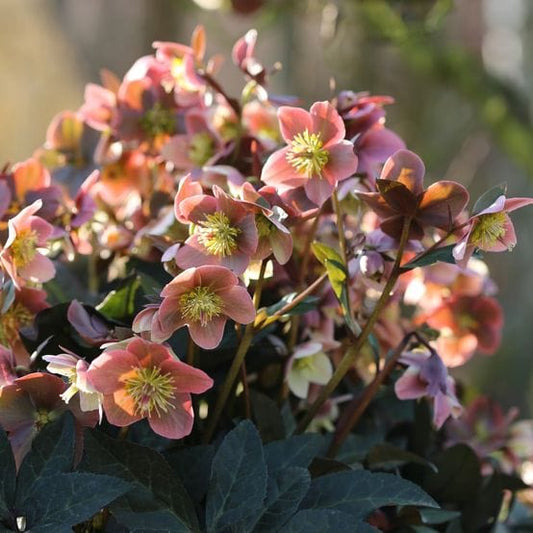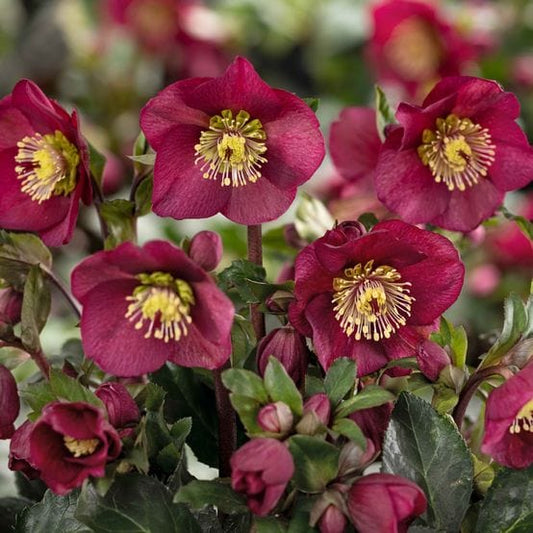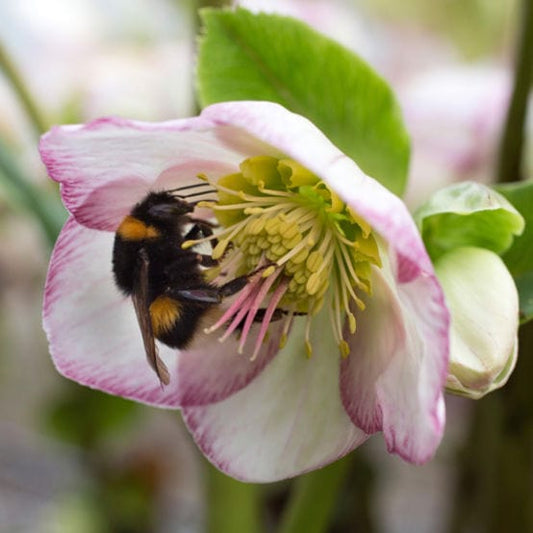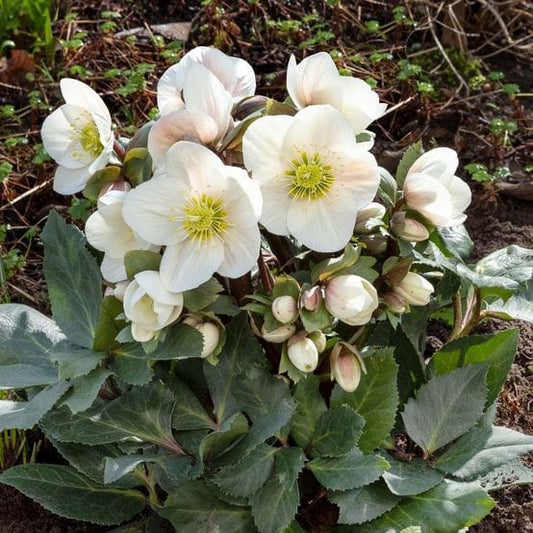10 Garden Jobs for Winter
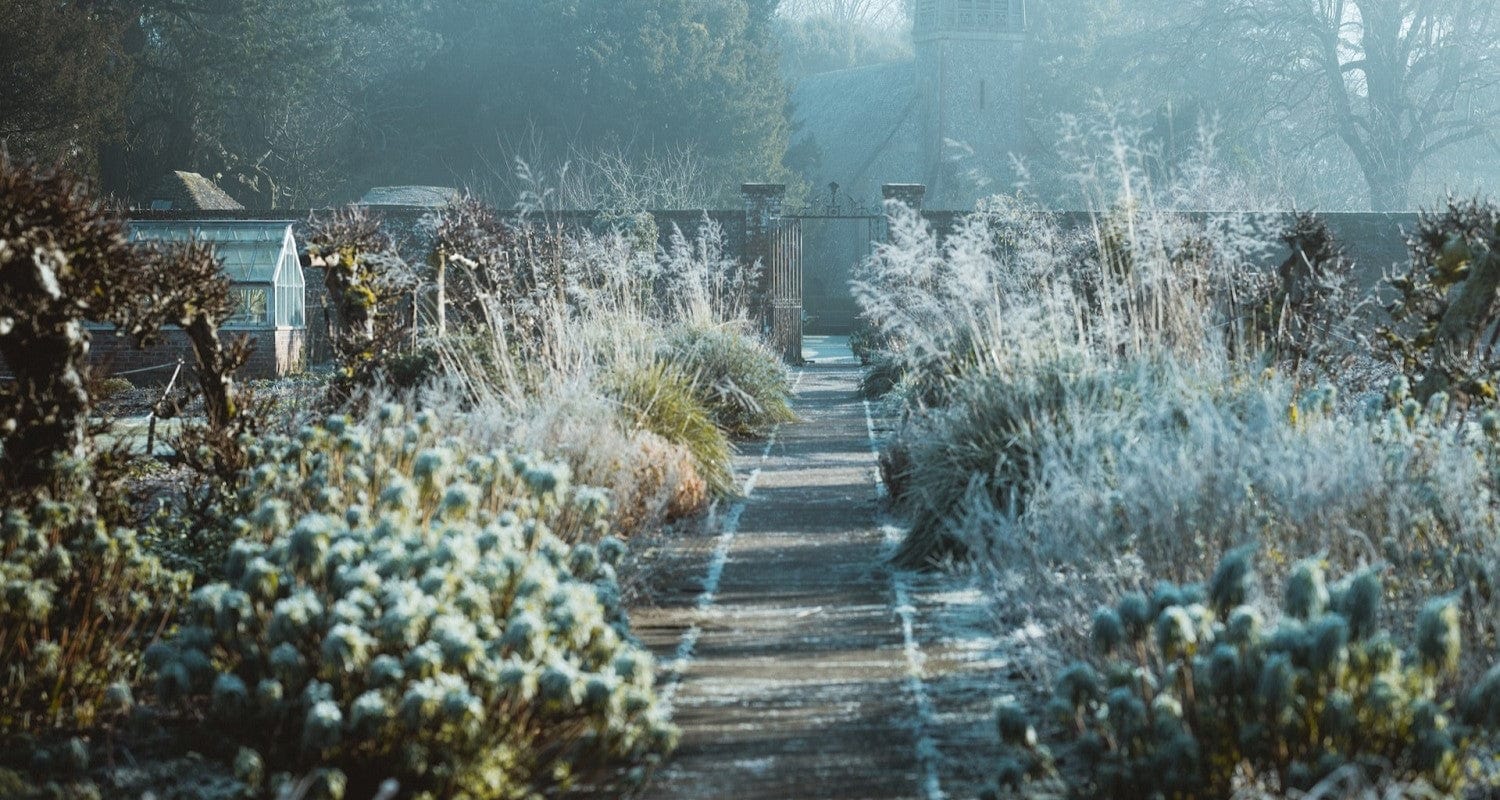
The temperature might be plummeting, but don’t hang up your spade just yet! There are lots of garden jobs to be getting on with in winter - and they don’t all involve raking leaves... here are our ten essentials.
Jump to:
- Plant bare roots
- Care for winter veg
- Cut back perennials
- Protect plants from frost
- Help your garden wildlife
- Make compost
- Harvest winter veg
- Prune fruit trees
- Plant a winter container
- Plan spring planting
1. Plant bare roots
If you ask a professional gardener, they’ll tell you this is the best time of year to plant trees and soft fruits. Why? It’s bare root season! Bare root plants are lifted from the ground while they’re dormant so that when you plant them in your garden, they’ve got plenty of time to settle in before bursting into strong, vigorous life in the spring. They’re also easier to care for, loads cheaper than the potted versions and use fewer resources to grow and transport them.

2. Care for your winter veg
If you’ve got your winter vegetables planted already, you might already be enjoying the first salad leaves and greens but some varieties, like cabbages and root veg, will still be growing throughout the winter.
Keep an eye on your growing crops in case they need watering - and be sure to protect them against pests like slugs, snails and hungry birds.
Find out more about protecting your crops from pests.

3. Cut back perennials
If your perennials have finished flowering, you can cut back the old foliage and dead flower stems to the ground. This can help prevent storm damage, fungal infections and pests. The crown of the plant will remain dormant in the ground and grow again next year.
However if you have perennials with attractive looking seed heads, by all means leave them to provide winter interest - if they start to look too messy you can cut them back in the spring at any time until the new growth starts to emerge.

4. Protect plants from frost
If frost is forecast, you’ll need to protect your more delicate plants, such as half-hardy annuals and winter salad plants. If you can, bring pots of tender plants indoors or into a greenhouse - if that’s not possible, just wrap your plants in bubble wrap or horticultural fleece overnight or cover them with a cloche. (You can make free cloches from empty plastic bottles.)

5. Help your garden wildlife
Now is the ideal time to give a helping hand to the animals that make up your garden’s ecosystem - after all, they work so hard all year round eating pests and aerating your soil! Hang up some bird feeders (out of reach of cats if you have them) and if you’re handy, build a bug hotel. Even just leaving a pile of fallen branches and leaves in a corner of your garden will provide a habitat for overwintering insects and small mammals.

6. Make compost while the sun doesn't shine
When garden waste collections come to an end, it’s the ideal time to start a compost heap. Composting allows you to recycle your garden waste, cardboard packaging, fruit and vegetable scraps and lots more - then use it to nourish your new plants in the spring.
Read our step-by-step guide to perfect compost.

7. Harvest winter veg
If you’ve grown winter vegetables, you’ll still have plenty of work to do harvesting throughout the winter. Hardy brassicas like Winter Cabbage and Brussels Sprouts are even said to taste better after a frost! Other vegetables ready to harvest in the colder months include Parsnips, Leeks and lovely Kale. If you’ve just planted in the autumn and your veg aren’t quite ready yet, don’t worry - these are all hardy and will stand in the ground quite happily until spring.

8. Prune fruit trees
While fruit trees are dormant from November to March, it’s the right time to prune them. Using sharp, clean tools, remove the three Ds - dead, diseased or damaged wood - then prune out any branches that are crossing and pressing against each other.
Here's more advice on tree pruning.

9. Plant a winter container
If you miss your containers full of summer annuals when the winter comes, why not replace them with a display of winter colour? You can use colourful foliage plants like Heuchera, Ivy, Euphorbia and Viburnum, and add contrast with winter flowering perennials such as Sedum, Echinops, Geranium and Brunnera. You should also raise your pots on bricks off the ground to avoid them getting waterlogged when it inevitably floods.

10. Plan your spring planting
Now most perennials have finished flowering and you may have cut them back, it’s the ideal time to take a look at your borders and see where there may be any gaps. These can be filled with spring bulbs for a temporary burst of colour while you enjoy browsing gardening websites and planning which new perennials and annuals you can order to patch the empty spaces. (This may be my favourite garden job of the year!)

Last updated: 13/11/2023


